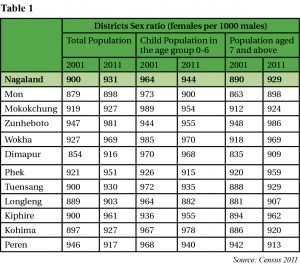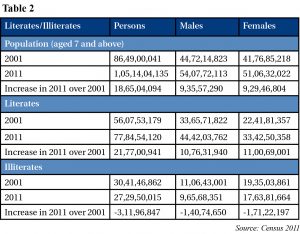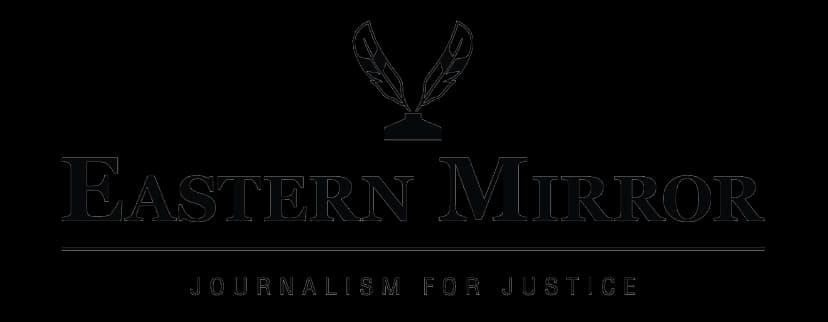MONDAY, AUGUST 04, 2025
- Home
- Nagaland’s sex ratio, literacy rate still ‘poor’
Nagaland’s sex ratio, literacy rate still ‘poor’
Published on Jan 28, 2019
By Mirror Desk
Share

 Eastern Mirror Desk
Dimapur, Jan. 27: In an attempt to create awareness on the issue of declining child sex ratio (CSR) and support the girl child in the country by providing equal rights and opportunities, India observes Jan. 24 as National Girl Child Day. This year, the Ministry of Women and Child development celebrated the occasion on the theme “Empowering girls for a brighter tomorrow,” coinciding Beti Bachao Beti Padhao (BBBP) week that ended on Saturday.
Despite efforts made by the central government and several non-governmental organisations to uplift the girl child over the years, statistics shows that gender discrimination still exists in the country and that has been manifested by the alarming sex ratio and huge gap in literacy rate between the male and female population.
Nagaland was awarded during the National Girl Child Day event held on Jan. 24 in New Delhi for excellent performance in implementing the Beti Bachao Beti Padhao (BBBP) scheme in the state category, and the district administration of Wokha was also among the 25 districts in the country that were awarded for good performance in BBBP in the category of “effective community engagement.” However, the state has been rated poorly on sex ratio and literacy rate.
The sex ratio of Nagaland was 900 females per 1000 males according to the Census of India 2001 but it improved to 931 females per 1000 males in 2011 census. Zunheboto has been rated highest with 981 among the 11 districts of the state, while Mon is at the bottom of the table with its sex ratio falling short of 900. (Refer table 1)
In terms of literary (2011 Census), 79.55% of the total population in Nagaland is literate, out of which literacy rate of the male is 82.75% while that of the female is 76.11%. The state’s literacy rate is above the national average but below the target of the Planning Commission.
According to Census of India 2011, the country’s sex ratio is 943 females per 1000 males, showing an improvement from 933 females per 1000 males in 2001 census, but the imbalance is still alarming. The sex ratio for children aged 0-6 years is 918.
India’s literacy rate according to Census 2011 is 74.04% against 64.83% in 2001, which is a jump of 9.21%. Gender-wise, male literacy rate is 82.14% (6.88% increase from 2001) and that of the female is 65.46% (11.79% increase from 2001). However, it still runs short of 85% literary rate set by the Planning Commission by the year 2011-12.
Out of the provisional total population of 1.2 billion, the number of persons aged seven years and above (in 2011) is 1,051,404,135, out of which 778,454,120 (54.07 crore males, 51.06 crore females) are literate and 272,955,015 (9.65 crore males, 17.63 crore females) are illiterates. However, out of the 217,700,941 literates been added during the 10 years (2001-11), number of females surpassed that of the males by more than 30 lakhs, indicating that the gender gap in literacy is shrinking in the country. (Refer table 2)
According to data made available by the District Information System for Education (DISE), enrolment of boys and girls in school education (grades I-XII) all over India in 2016-17 was 13.13 crore and 12.17 crore respectively. In the academic year 2015-16, enrolment of boys was about 13.51 crore compared to 12.54 crore girls, while it was 13.46 crore (boys) and 12.47 crore (girls) in 2014-15.
The trend shows that literacy of female population in the country has improved over the years but has a long way to go before catching up with their male counterparts.
Eastern Mirror Desk
Dimapur, Jan. 27: In an attempt to create awareness on the issue of declining child sex ratio (CSR) and support the girl child in the country by providing equal rights and opportunities, India observes Jan. 24 as National Girl Child Day. This year, the Ministry of Women and Child development celebrated the occasion on the theme “Empowering girls for a brighter tomorrow,” coinciding Beti Bachao Beti Padhao (BBBP) week that ended on Saturday.
Despite efforts made by the central government and several non-governmental organisations to uplift the girl child over the years, statistics shows that gender discrimination still exists in the country and that has been manifested by the alarming sex ratio and huge gap in literacy rate between the male and female population.
Nagaland was awarded during the National Girl Child Day event held on Jan. 24 in New Delhi for excellent performance in implementing the Beti Bachao Beti Padhao (BBBP) scheme in the state category, and the district administration of Wokha was also among the 25 districts in the country that were awarded for good performance in BBBP in the category of “effective community engagement.” However, the state has been rated poorly on sex ratio and literacy rate.
The sex ratio of Nagaland was 900 females per 1000 males according to the Census of India 2001 but it improved to 931 females per 1000 males in 2011 census. Zunheboto has been rated highest with 981 among the 11 districts of the state, while Mon is at the bottom of the table with its sex ratio falling short of 900. (Refer table 1)
In terms of literary (2011 Census), 79.55% of the total population in Nagaland is literate, out of which literacy rate of the male is 82.75% while that of the female is 76.11%. The state’s literacy rate is above the national average but below the target of the Planning Commission.
According to Census of India 2011, the country’s sex ratio is 943 females per 1000 males, showing an improvement from 933 females per 1000 males in 2001 census, but the imbalance is still alarming. The sex ratio for children aged 0-6 years is 918.
India’s literacy rate according to Census 2011 is 74.04% against 64.83% in 2001, which is a jump of 9.21%. Gender-wise, male literacy rate is 82.14% (6.88% increase from 2001) and that of the female is 65.46% (11.79% increase from 2001). However, it still runs short of 85% literary rate set by the Planning Commission by the year 2011-12.
Out of the provisional total population of 1.2 billion, the number of persons aged seven years and above (in 2011) is 1,051,404,135, out of which 778,454,120 (54.07 crore males, 51.06 crore females) are literate and 272,955,015 (9.65 crore males, 17.63 crore females) are illiterates. However, out of the 217,700,941 literates been added during the 10 years (2001-11), number of females surpassed that of the males by more than 30 lakhs, indicating that the gender gap in literacy is shrinking in the country. (Refer table 2)
According to data made available by the District Information System for Education (DISE), enrolment of boys and girls in school education (grades I-XII) all over India in 2016-17 was 13.13 crore and 12.17 crore respectively. In the academic year 2015-16, enrolment of boys was about 13.51 crore compared to 12.54 crore girls, while it was 13.46 crore (boys) and 12.47 crore (girls) in 2014-15.
The trend shows that literacy of female population in the country has improved over the years but has a long way to go before catching up with their male counterparts.
